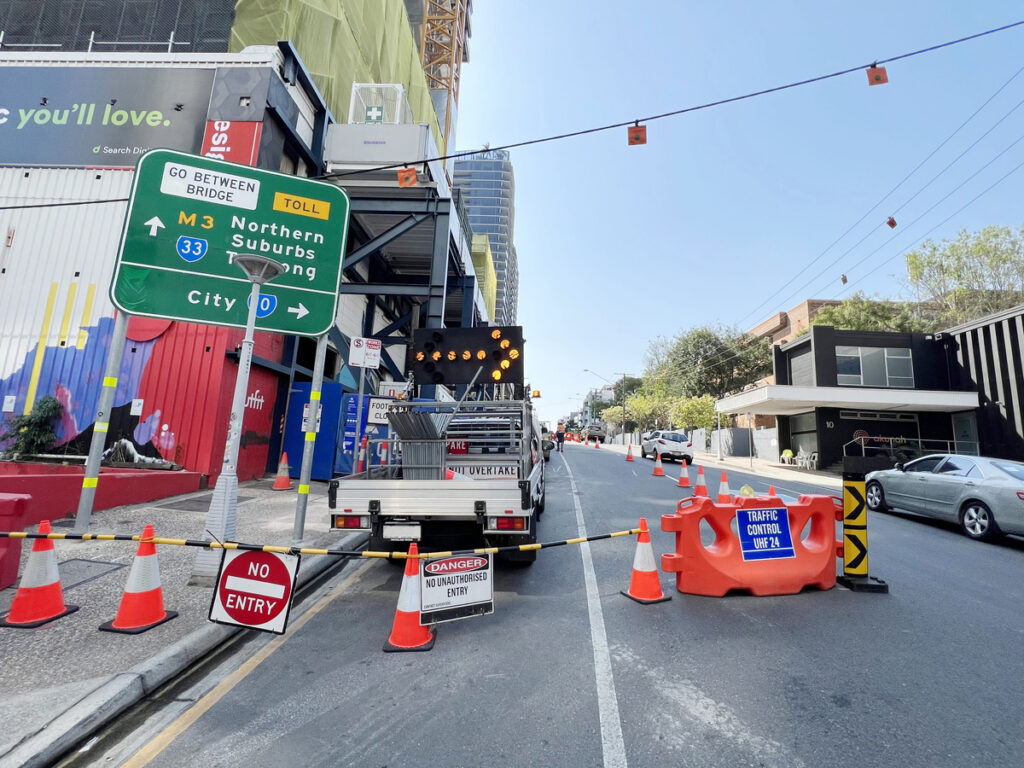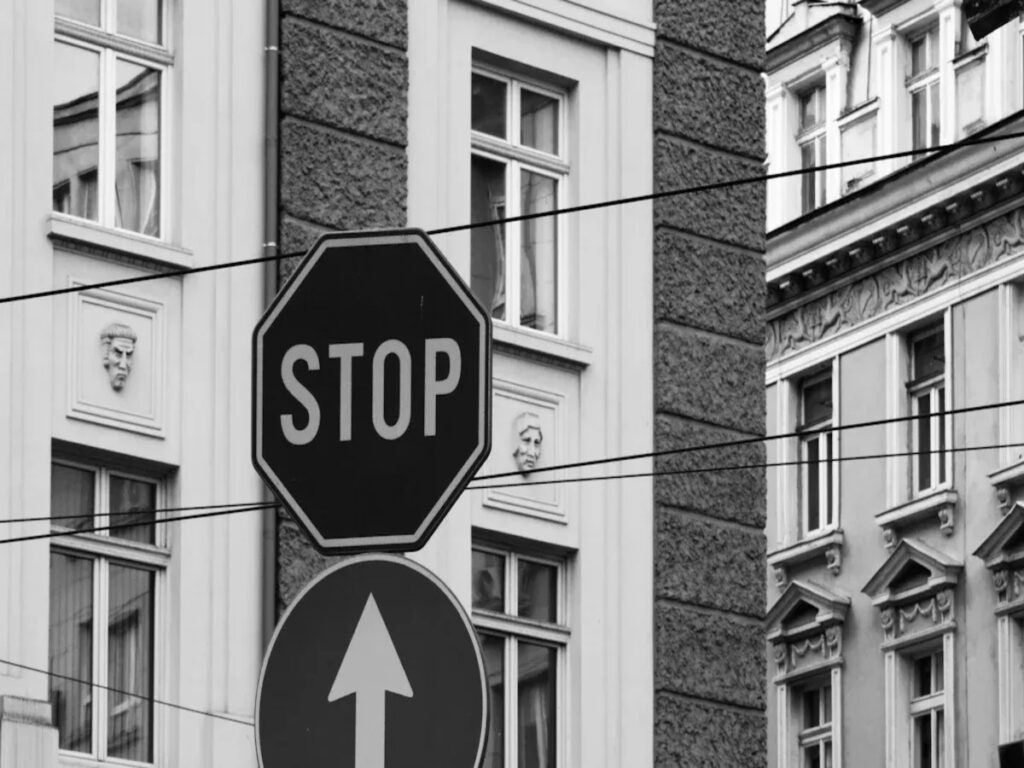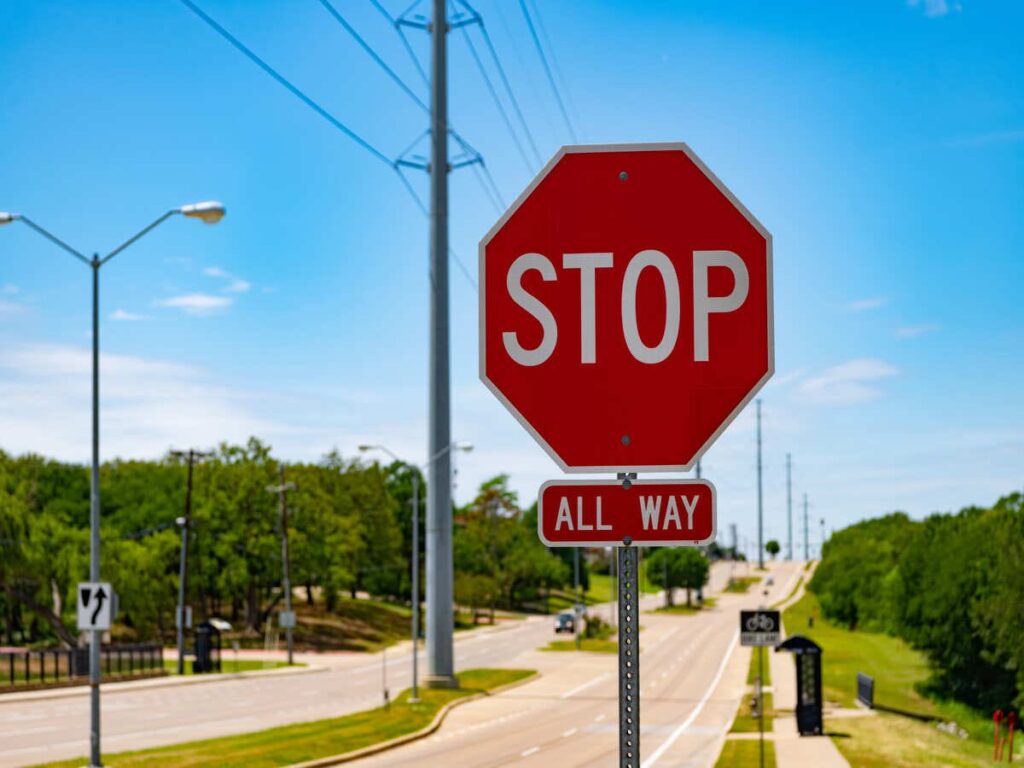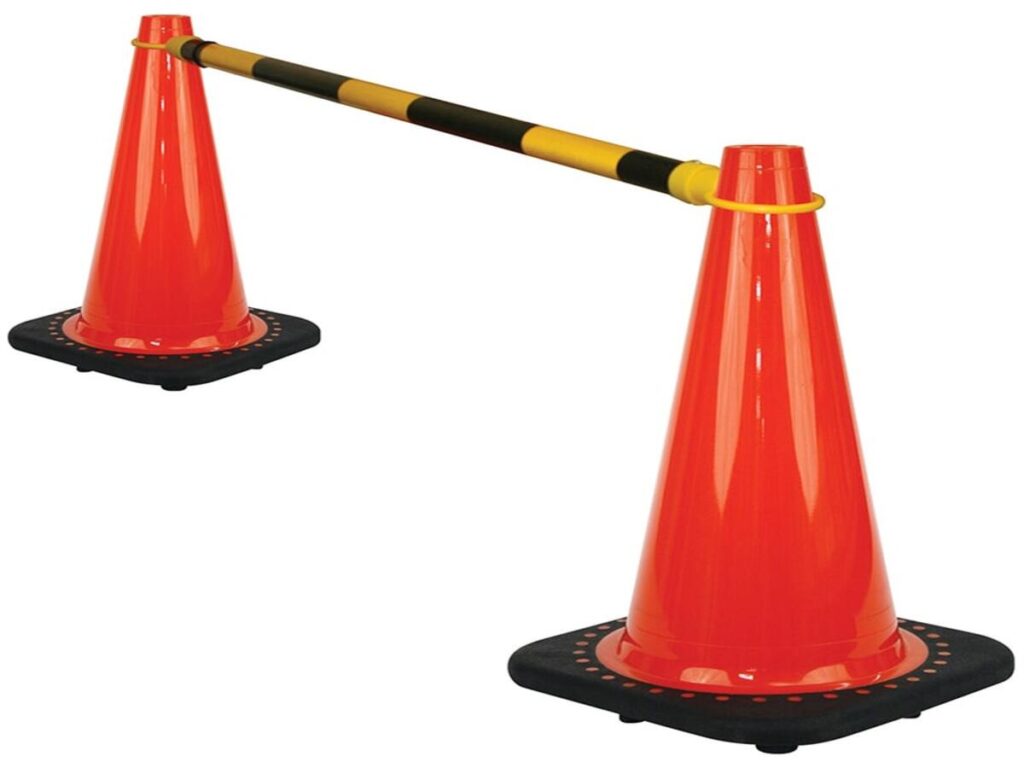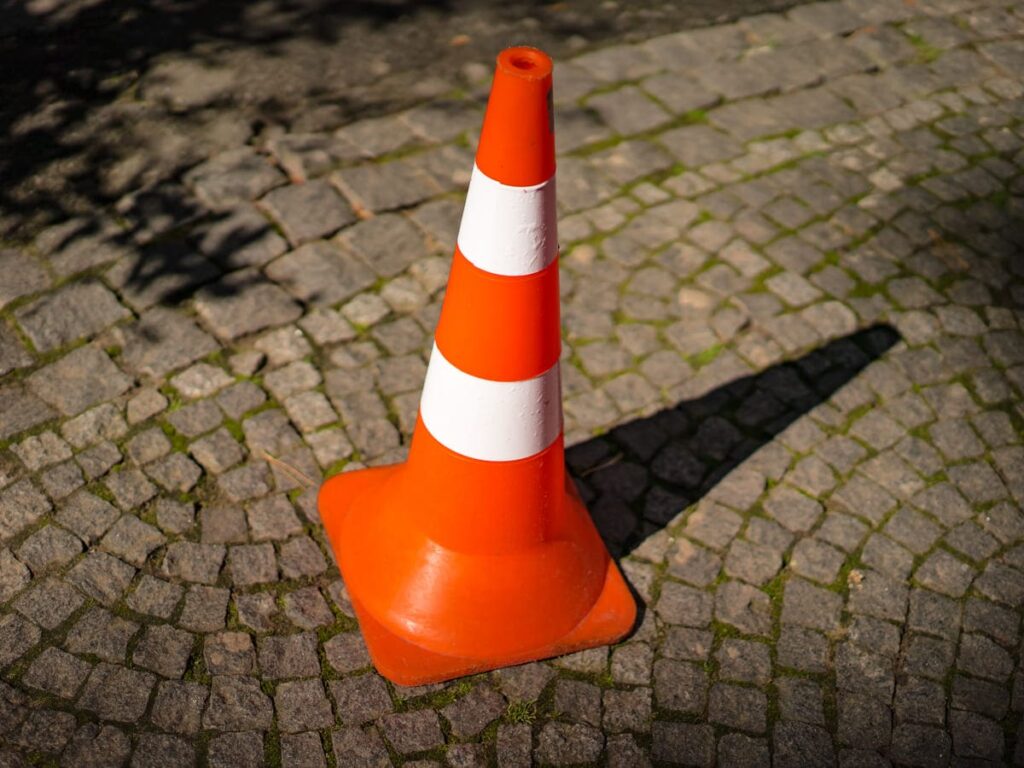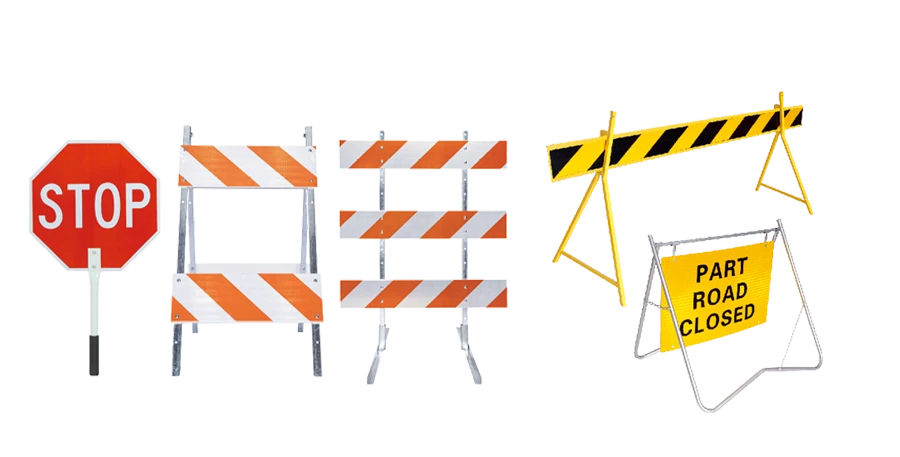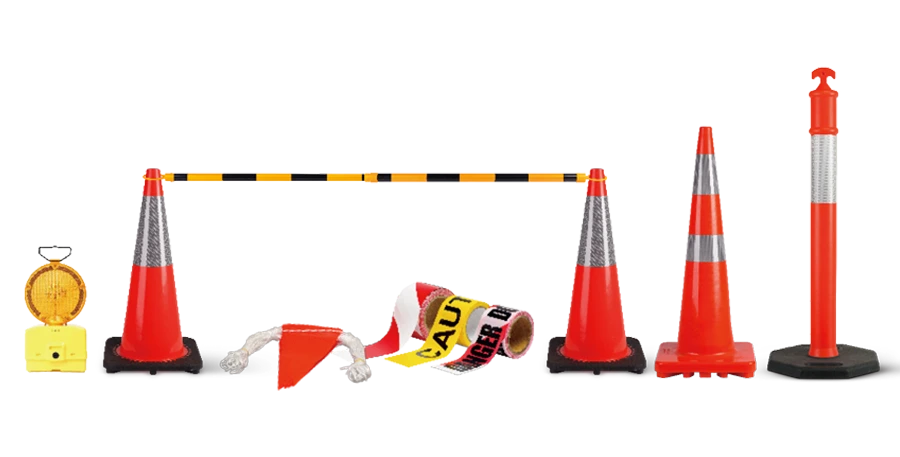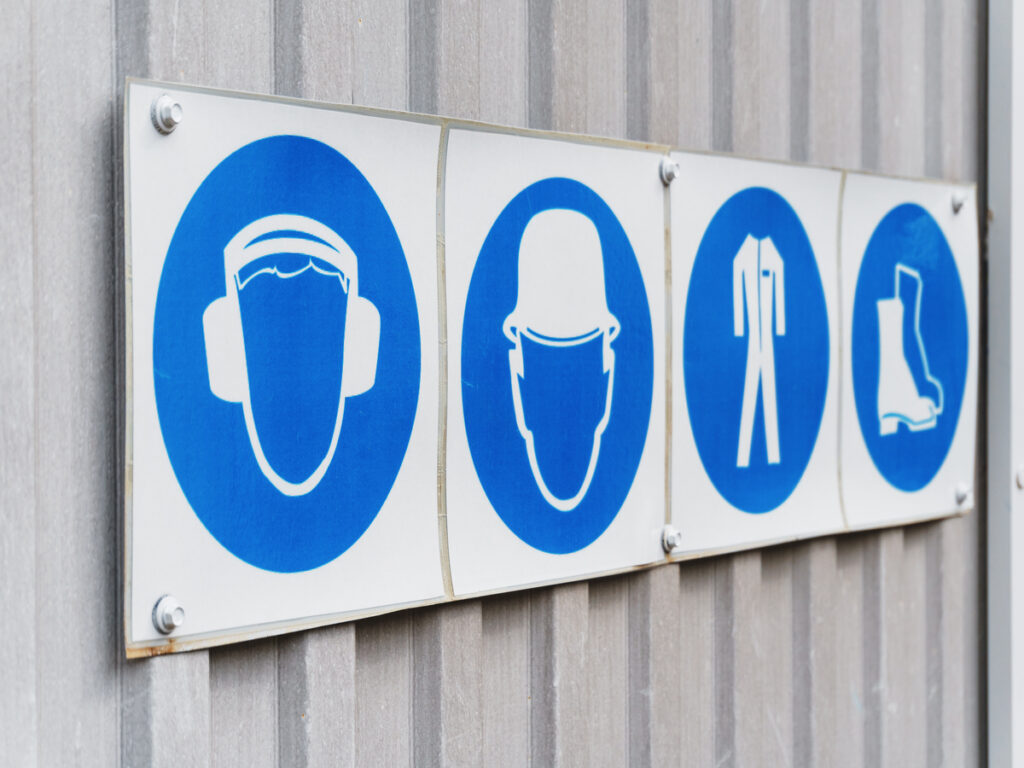
Every workplace in the UK has dangers that can harm people. In 2023/24, 138 workers died and over 600,000 got hurt but did not die. Many accidents happen when workers do not see or do not understand safety signs and symbols. Clear work safety signs help stop accidents and save lives. Standardised safety signs and symbols help everyone know about dangers, no matter where they are from or what language they speak. Safety signs are not just about rules; they help make the workplace safer for everyone.
At OPTRAFFIC, we believe that effective safety signage must do more than meet regulatory requirements—it must also be visually clear, linguistically accessible, and culturally appropriate. In the UK, compliance with the Health and Safety (Safety Signs and Signals) Regulations 1996 and the BS EN ISO 7010 standard ensures that safety signs are recognisable, even across diverse workforces.
Key Takeaways
- Clear and standardised safety signs help stop accidents. They help all workers see dangers fast and easily.
- Employers must follow UK laws about safety signs. They must put up, look after, and explain safety signs. This keeps workplaces safe and stops fines.
- Safety signs use special colours and shapes for each type. They show what to do or not do. There are prohibition, warning, mandatory, and emergency signs.
- Signs should be easy for workers to see. They must stay in good shape. Training staff on what signs mean makes safety better every day.
- Using pictures and the same signs everywhere helps all workers. Workers from different places can understand safety rules and feel included.
Why Work Safety Signs Matter
Accident Prevention
Work safety signs are very important for keeping people safe. Health and safety signs help everyone see dangers before something bad happens. Experts say safety signs tell workers about hazards and how to stay safe. These signs use colours and shapes to show how bad a danger is. Yellow means a small hazard. Orange means a bigger hazard. Red means a very serious hazard. Signs need to be put in the right place so workers can see them. They should warn people early but not too late. If there are too many signs or they do not match, workers can get confused. Using the same health and safety signs helps everyone understand quickly.
Workplace safety signs also help people who speak other languages or read differently. Clear symbols and easy words make signs simple to understand. Safety signs remind workers to do the right thing and not take risks. Warning signs tell workers about dangers like chemicals or machines that move. When workers see these signs, they know how to stay safe. Safety signs are an important part of every safety plan at work.
Legal Compliance
Legal compliance is a big reason for using health and safety signs. The law in the UK says employers must use safety signs for risks that cannot be removed. Health and safety signs help companies follow the rules and not get fined. The law says clear signs must be in places where accidents could happen. Employers must make sure all signs are easy to see and understand. Legal compliance also means keeping signs in good shape and changing them if they break.
Legal rules cover all types of safety signs, like work safety signs, health and safety signs, and warning signs. Companies must teach staff what each sign means. Legal compliance helps keep workers safe and shows a company cares about safety. Following the law on health and safety signs builds trust and keeps everyone safe at work.
Types of Safety Signs and Symbols
Safety signs and symbols help people know about dangers at work. Standardised safety signs always use the same colours, shapes, and pictures. This helps everyone recognise them, even if they do not speak English well. Using the right safety symbols keeps workplaces safer and stops accidents.
Prohibition Signs
Prohibition signs show what people must not do. These signs have a red circle with a line through it. Some examples are no smoking signs and no entry signs. Studies show that prohibition signs help people notice dangers fast. In one survey, people said these signs show a high danger level. Brain research found these signs make people pay more attention. No smoking and no entry signs stop unsafe actions and keep everyone safe.
| Sign Type | Colour | Shape | Example |
|---|---|---|---|
| Prohibition | Red | Circle | No smoking signs |
Warning Signs
Warning signs tell people there is a hazard nearby. These signs use a yellow triangle with a black border. Warning signs include slippery surface signs and hazard signs for chemicals or electricity. The International Labour Organization says warning signs are important when other safety controls cannot remove the risk. Warning signs like slippery surface signs remind workers to be careful. They help stop accidents by telling people about dangers before someone gets hurt.
- Warning signs often use words like “danger” or “caution”.
- Studies show warning signs with clear words and pictures help people follow safety rules.
Mandatory Signs
Mandatory signs tell people what they must do to stay safe. These signs use a blue circle with a white symbol. Some examples are “Wear eye protection” or “Use handrails”. Research with technical workers found that clear safety signs and symbols help people understand and follow the rules. Workshop safety signs and fire action signs are common mandatory signs. Training helps workers know what these signs mean and why they are important.
Emergency Signs
Emergency signs show where to go or what to do in an emergency. These signs use a green rectangle or square with a white symbol. Emergency exit signs, first aid signs, and fire safety signs are all emergency signs. Emergency exit signs help people find the way out quickly during a fire or other danger. Fire safety signs and fire action signs tell workers what to do if there is a fire. Emergency exit signs must always be clear and easy to see.
Standardised safety signs and symbols help everyone understand safety rules. This helps stop accidents and keeps workplaces safe.
Legal Standards for Workplace Safety Signage
UK Regulations
UK workplaces have to follow strict rules about safety signs. The Health and Safety (Safety Signs and Signals) Regulations 1996 explain what employers must do. These rules say health and safety signs are needed if risks are still there after other safety steps. Employers must always follow these safety sign rules.
- The rules say employers must:
- Put up health and safety signs where they are needed.
- Make sure all signs are clean and easy to see.
- Teach staff what each sign means.
- Check that signs follow the newest rules.
If employers do not follow these rules, they can get into big trouble. The Health and Safety Executive (HSE) can fine a business up to £20,000 for each mistake. If someone gets hurt because a sign is missing or not clear, the employer could be sued. Following the rules helps companies stay out of trouble and keeps everyone safe.
Clear health and safety signs are not just needed by law. They also help protect people and keep a business’s good name.
British Standards (BS 5499)
British Standards like BS 5499 give extra help for using health and safety signs. These standards show the best ways to design, put up, and look after signs. BS 5499 makes sure all signs look the same and are easy to understand. Employers should use these standards to follow the law and make things safer.
Many accidents happen when people do not see or understand safety signs. Reports from many places show that unclear safety signs cause most workplace accidents. Good rules and clear standards help stop these problems. Employers need to check their signs often and change any that are broken or hard to read. Following both the rules and standards keeps everyone safe and shows that safety is important.
Proper Usage of Safety Signs
Placement and Visibility
Putting health and safety signs in the right place keeps workers safe. Signs should be easy to see and put where people will notice them before they get close to danger. If signs are at eye level and near danger, workers can spot them fast. Lights or glow-in-the-dark signs help people see them when it is dark.
- OSHA says there are over 6,000 fall protection problems each year. This shows why clear safety signs are needed to stop accidents.
- Signs at eye level and near hazards help workers see them before they go into dangerous places.
- Signs should not be blocked, and lights help people read them all the time.
- Using the right signs helps stop injuries by warning about things like forklifts, chemicals, and electricity.
- Emergency exit and first aid signs help workers act quickly in emergencies and make everyone safer.
Signs with flashing lights are easier to see and help people leave faster. Studies show these signs help stop crowds and make it easier to get out in an emergency. Only 38% of people see normal emergency exit signs, but almost everyone who sees them follows the directions. Flashing lights make these signs work much better.
A study talked about ‘conspicuity’, which means how much a sign stands out. Signs are harder to see if the background is busy. Putting a border or mask behind a sign makes it easier to notice. In hospitals, experts use special tools to find the best places for signs by watching how people move. This helps everyone find their way and makes things safer in big buildings.
Tip: Put health and safety signs where workers look most, like doors, exits, and near machines. Make sure nothing blocks the signs.
Maintenance and Durability
Health and safety signs must be in good shape to work well. Broken or faded signs do not warn people properly. Employers should check signs often and change any that are broken, dirty, or hard to read. Weather, sun, and chemicals can damage signs over time. Strong materials help signs last longer, especially outside or in tough places.
- Clean signs often so people can read them.
- Change signs that fade, crack, or peel.
- Use weatherproof signs outside.
- Check fire safety signs and emergency exit signs after changes to the building.
Permanent signs are best for dangers that are always there. Temporary signs are good for short-term dangers, like repairs or spills. Always take away temporary signs when the danger is gone so people do not get confused.
Note: Safety signs must always be easy to see and in good shape. Checking signs often helps keep everyone safe.
Staff Training
Training helps workers know what health and safety signs mean and what to do. Staff need to learn what each sign means and how to act when they see one. Toolbox talks and safety meetings help workers remember safety rules. Research shows that telling stories in training helps people learn better, especially new workers. Workers who get this training do better on safety tests and know more about dangers.
- Story-based toolbox talks help staff learn more, especially new workers.
- Well-trained workers know more about fire safety signs, warning signs, and emergency exit signs.
- Training should cover all health and safety signs and explain why each one is important.
Employers should give training often and use real examples. This keeps safety in mind and helps everyone remember what to do in an emergency.
Remember: Staff who know about health and safety signs help make the workplace safer for everyone.
Overcoming Challenges in Workplace Safety Signs
Language and Literacy
Many UK workplaces have staff from many countries. Some workers do not speak English well or cannot read easily. This makes it hard for them to understand workplace safety signage. Studies show workers with low reading skills often do not get text-only signs. This can make accidents more likely. In 2009, the United Nations found Hispanic workers with poor English had more injuries. OSHA data says bilingual workplace safety signage can lower accidents by 25%.
Experts say using pictures and symbols helps everyone understand safety messages. Pictograms and universal symbols are good for workers who cannot read English. Using both graphics and words makes workplace safety signage clearer. Signs should use the main languages workers speak. It helps to think about reading direction and what symbols mean in different cultures. Bilingual training and regular sign updates make safety and confidence better. Testing signs with different groups makes sure everyone understands.
Tip: Use pictures and words on workplace safety signage so all workers stay safe.
Consistency Across Sites
Big companies often have many sites or buildings. If workplace safety signage looks different at each site, workers may get confused. Using the same signs helps workers know what to do, even in new places. Standardised colours, shapes, and symbols make safety messages clear everywhere. This helps workers trust the signs and act fast in emergencies.
Managers should check all sites to make sure workplace safety signage matches. They should use the same designs and update old signs. Regular checks keep signs up to date and easy to understand. Training at all sites helps staff learn what each sign means. When everyone sees the same workplace safety signage, safety awareness grows and accidents go down.
Note: Consistent workplace safety signage at all sites helps build a strong safety culture and keeps everyone safe.
Impact of Workplace Safety Signage
Safety Culture
Workplace safety signage changes how people act at work. When workers see clear signs every day, they remember safety rules. Signs show that a company cares about keeping people safe. This helps everyone feel safe and look out for each other.
A study with 210 workers found 70% acted safely when they had a good attitude about health and safety. Signs and training help workers have this good attitude. When workers know what to do, they feel sure of themselves and make fewer mistakes. Safety signs remind everyone to stay alert and not take risks.
Companies that use workplace safety signage well have fewer accidents. Signs help everyone know the rules, even if they speak different languages. This makes it easier to follow the law at work. Managers who check and update signs show that safety is always important.
Safety signs do more than warn about danger. They help everyone feel safe and cared for at work.
Employee Engagement
Workplace safety signage also helps workers feel involved. When staff see signs that are easy to understand, they know what to do. This makes them more likely to follow safety steps and speak up if they see a problem.
Research shows that safety posters and signs help workers follow safety rules better. One study found a big increase in safe actions after new signs were put up. The results showed a strong link between good signage and better safety actions. When companies use signs that match safety standards, workers trust their employer wants a safe workplace.
Good workplace safety signage makes workers feel happier. Workers feel valued when they see their safety matters. This leads to better teamwork and fewer accidents. Companies with a safe workplace culture see more staff joining safety meetings and sharing ideas.
A compliant work environment starts with clear signs and ends with everyone working together for safety.
Knowing what workplace safety signs and symbols mean keeps everyone safe. The law says every workplace must have these signs. Rules say signs need checking and updating often. Following the law keeps workers and businesses safe. Legal standards show how to make and use signs. Sometimes, legal advice is needed for hard problems. Following the rules means doing every legal step. Checks help keep signs new and correct. Training helps staff know what to do with signs. Following the law helps everyone trust each other at work. Workers should look at their signs, check for new rules, and use a checklist to follow the law. For more help, look at official legal guides.
Curious about how safety sign laws compare in other countries? This article explores how the U.S. and Australia approach workplace signage standards—and how these systems differ from those in the UK. Read more in our blog: OSHA vs. AS 1319: A Comparative Look at Safety Sign Standards in the U.S. and Australia.
FAQ
What do the different colours on safety signs mean?
| Colour | Meaning | Example |
|---|---|---|
| Red | Prohibition | No smoking |
| Yellow | Warning | Danger: electricity |
| Blue | Mandatory | Wear eye protection |
| Green | Emergency | First aid |
Who is responsible for safety signs at work?
The employer has to put up all safety signs. They must look after the signs and check them often. They also need to show staff what each sign means. This keeps everyone safe at work.
How often should safety signs be checked?
Employers need to look at safety signs often. They should check signs after anything changes at work. If a sign is broken or faded, it must be swapped quickly.
Can safety signs use only pictures?
Yes, safety signs can have just pictures. Symbols help everyone know what to do, even if they cannot read English. Pictures make safety messages easy for all workers.
What should workers do if a safety sign is missing or unclear?
Workers should tell their manager or boss right away. Acting fast helps stop accidents and keeps everyone safe.


